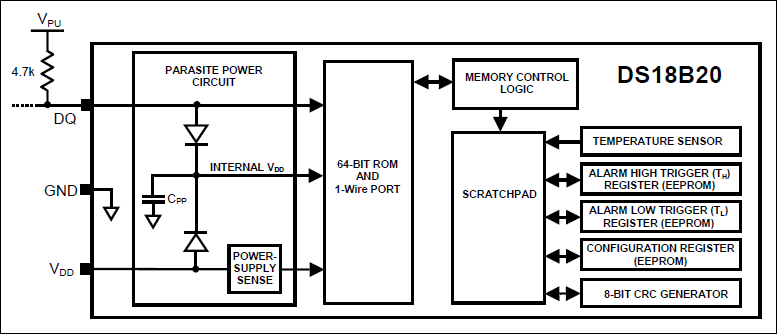Temperature Logger
On 1st July 2013 in Not Just Arduino we discussed the general concept of a temperature logger based on multiple DS18B20 1-Wire sensors from Maxim. It's only concepts so far.
The initial application is to monitor the heating in a home with any number of DS18B20 sensors mounted at interesting places inside and outside. An Arduino controls the sensors via 1-Wire (actually two wire because of the ground return) multidrop cables. The Arduino is battery powered and sleeps most of the time to conserve energy. Periodically the Arduino wakes up and reads the temperatures of the sensors.
The Arduino queues the temperature readings in a local FIFO buffer using either on chip non volatile memory or an external SD card. The Arduino uses a short range wireless transceiver to send the temperature readings to a networked base station.
The base station is a Raspberry Pi equipped with a similar wireless transceiver, managing a database and able to receive data from multiple Arduinos. Multiple Raspberry Pis can also interconnect via LAN or WLAN to overcome the range limitations of the low power wireless transceivers. Users view the temperature history as text or graphics in web pages generated locally on a Raspberry Pi or a cloud based website (some of this has already been developed).
The pin count of the serial interfaces is very low. Therefore after prototyping the Arduino can be replaced by a smaller equivalent chip. The resulting remote sensor controller could be smaller than three AAA batteries.
